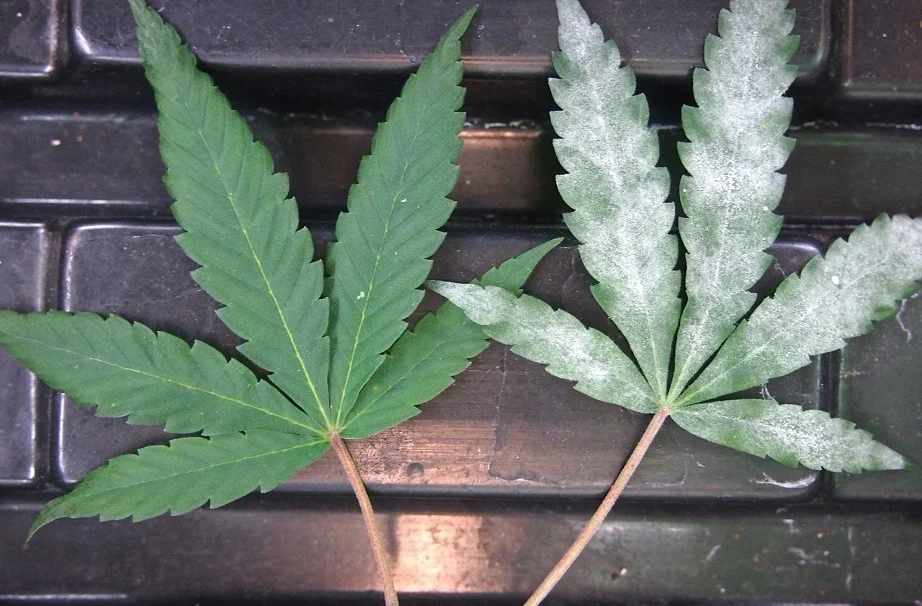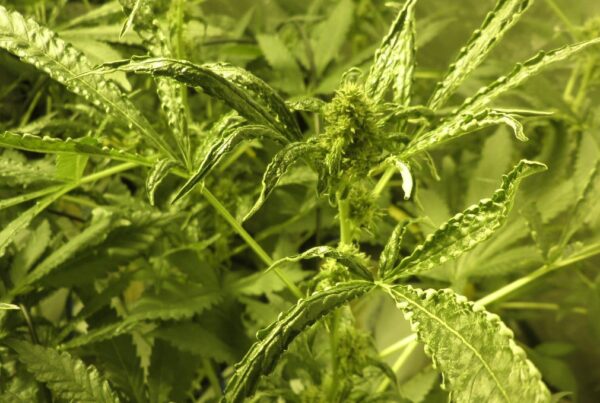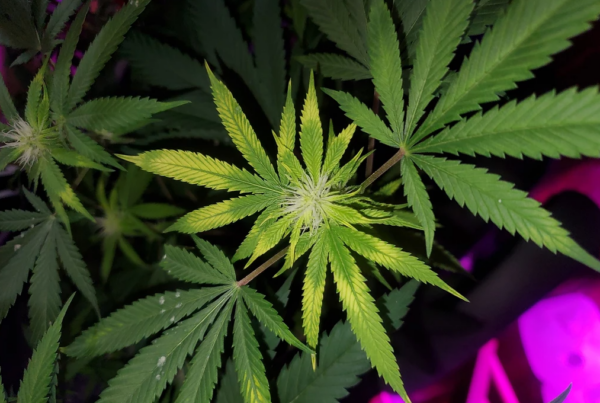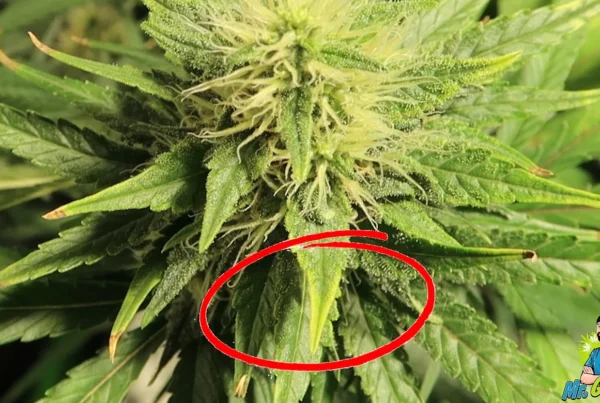Powdery Mildew, also known to cannabis growers as oidium, white powdery mildew, or white mold, can be a menace for the most cautious of cannabis growers. Powdery mildew is a relatively common problem that any cannabis grower can run into. Whether you are a beginner grower or a master cultivator, this parasitic fungus can become a pestering and a frequent problem if correct measures are not taken. This article will help you identify the early signs of the problem and provide you with a step-by-step cure that will set you on a path to recovery.
Before starting treatment or making any kind of diagnosis, understanding the characteristics of powdery mildew is imperative. Powdery mildew (PM) is essentially a disease caused by fungi in the order Erysiphales. This mildew thrives in the same temperature that cannabis plants thrive in, hence, conditions are always ideal for it to grow. Another factor that makes it a challenge to prevent the mildew from taking over is that mildew spores can get to your cannabis plants from almost anywhere; they can be floating around in the air or transport through you, your pets, or even through your air ventilation systems.
Although it can be easy to reverse any damage done by powdery mildew, in extreme cases, it can become lethal for the plant. It will eat the plant, stunt its development, and grow rapidly. But what makes your grow room perfect for a powdery mildew invasion?
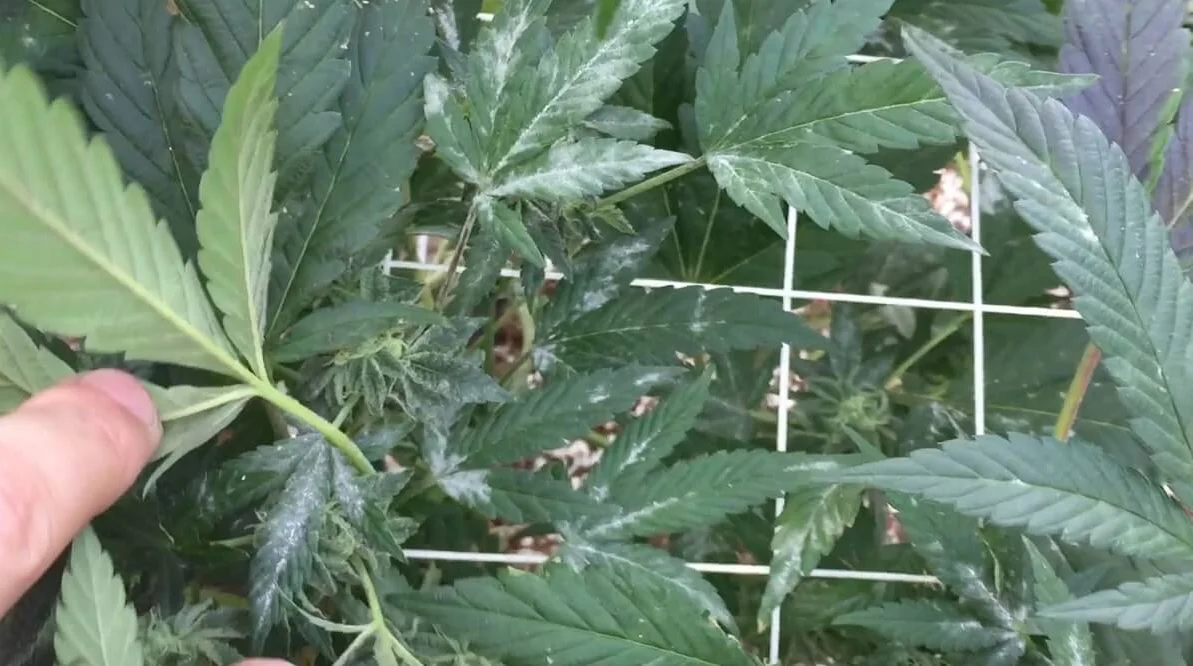
What Causes Powdery Mildew on Cannabis Plants?
Powdery mildew will become an unwanted tenant if the humidity in the grow room is high and there is a lack of air circulation. Seedlings and young plants require a high humidity to grow. Mature plants, particularly in the flowering phase, can still grow under lower humidity levels. Use a hygrometer to monitor the relative humidity in your grow environment. Use a dehumidifier to reduce the humidity in your grow space if you are struggling to keep the humidity level down. Also be sure to inspect your plants every day to look for signs of powdery mildew infection.
The humidity ranges listed below are general ranges. Cannabis will grow just fine in these ranges, although, depending on the temperature in your grow environment, other ranges may be more optimal for plant growth:
Seedlings – 60% to 85%
Vegetative Plants – 50% to 65%
Flowering Plants – 40% to 55%
Airflow and air quality are two significant factors that contribute to growth of powdery mildew on your cannabis plants. Air stagnation or low ventilation and low airflow increases the chances of spores to come in contact with the cannabis plants. Ensuring that you have good ventilation in your grow room and using a fan for better airflow will prevent your cannabis plants from getting powdery mildew.
An overcrowded grow room with a lot of plant leaves touching each other not only makes the environment damp, it also contributes to mildew’s rapid growth. Leave ample space between plants to avoid this issue.
A checklist to keep your cannabis plants safe from powdery mildew:
Low relative humidity (preferably below 60%)
Good ventilation
Ample space between plants
Proper airflow
Symptoms of Powdery Mildew on Cannabis Plants
If you inspect your plant regularly, it is highly likely that you will spot powdery mildew early on. The reason is that powdery mildew looks like flour or snow and is easy to see on the green leaves of cannabis plants. If you see white fuzzy patches on your leaves, it is a strong indication to start treatment. It is impossible to see spores while in the air, therefore, you cannot conceivably eradicate before sporulation.
Powdery Mildew first appears on the leaves but can quickly take over stems/buds and will stunt the plant’s growth. Once the buds are affected, they have a distinct damp smell which makes the harvest useless. Powdery mildew is bad news but luckily it can be easily treated.
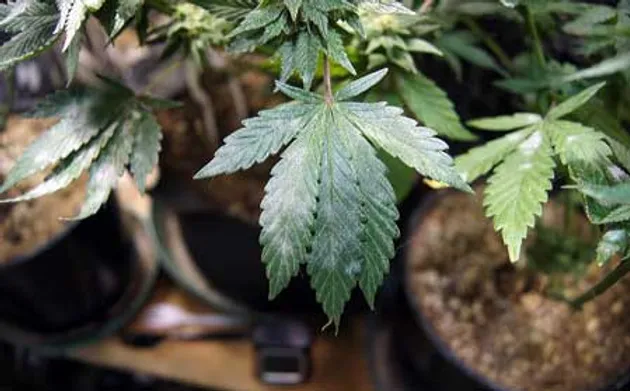
How To Fix Powdery Mildew on Cannabis Plants
Treating powdery mildew on your cannabis plant is simple and cheap. It does not require purchasing any expensive products since there are effective treatment solutions that you can make at home. Although, there are also products that you can purchase to treat it. The following three-step cure is one of the most effective routes to take to fix the problem:
Step 1: Paper Towel and Tap Water
The first step will help get rid of the white patches on the leaves. Wipe the spores off the leaves with the help of a wet paper towel. Using tap water to wet the towels is perfectly safe. Be gentle as you wipe the leaves and remember to put the paper towel in a plastic bag. Proper disposal of the used paper towels will prevent any further infection.
Step 2: Make Changes in the Room
You have learned that high humidity with low airflow and bad ventilation makes the grow room ideal for powdery mildew to grow. Make some changes in the room to make it difficult for the spores to settle. Two or more oscillating fans places strategically in the room to improve airflow will certainly make a difference. Also, ensure there is good ventilation in the room and the humidity is below 60%.
Step 3: Treatment
Wiping off mildew and making conditions less ideal is not enough. It is important to cure it. You can use one of the homemade remedies or purchase a good treatment from the store.
- There are some oils that can help you get rid of powdery mildew, for instance, neem oil, sesame oil, and fish oil. Make an oil spray with neem oil and water; it is recommended to mix 4 teaspoons of neem oil with a gallon of water to make an effective spray.
- Some farmers use milk to kill the mildew since it is an antiseptic. Whole milk or unpasteurized organic is best. Make a mixture containing 40% milk and 60% water then spray it on the plant in bright daylight.
- If you have some 3% hydrogen peroxide (H2O2) sitting in the pantry, mix one teaspoon of H2O2 in one gallon of water then spray the plant.
- Other solutions that work are mixing two teaspoons of apple cider vinegar with water or two tablespoons of baking soda in a gallon of water. Another known remedy is to mix one teaspoon of limonene with one quart of water in a spray bottle, then spray the plant to kill the mildew.
- You can buy products from stores that can cure the infection, for instance, GrowSafe. or Southern Ag Garden Friendly Bio Fungicide
- Use different oils like clove oil and jojoba oil to keep the problem at bay. You can also use sulfur burners as a preventative measure.
There are various treatments that you can use and all of them work. But your best bet is to be proactive and prevent the problem from occurring in the first place by making sure that your plant is in a healthy environment that allows it to flourish. Have you ever encountered powdery mildew? What did you do to get rid of it? Let us know by commenting below!
![]()

